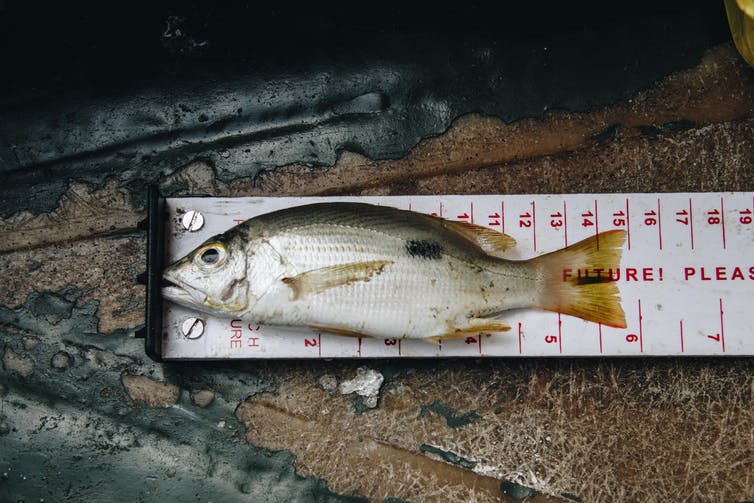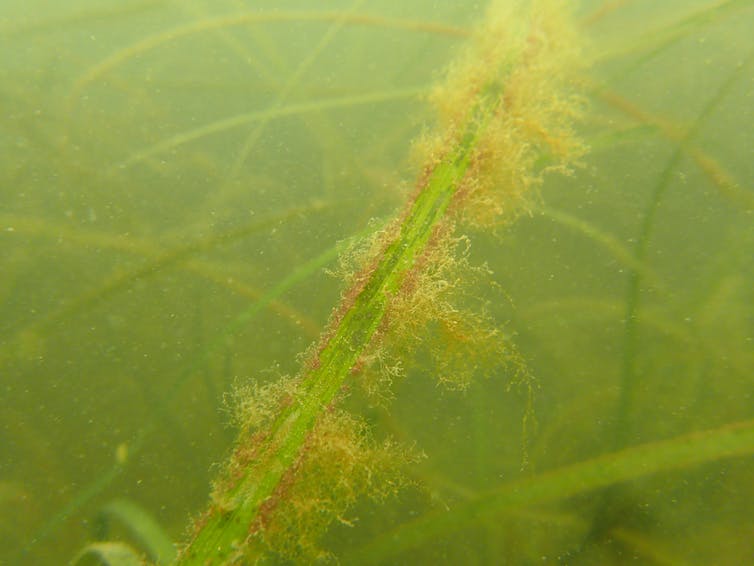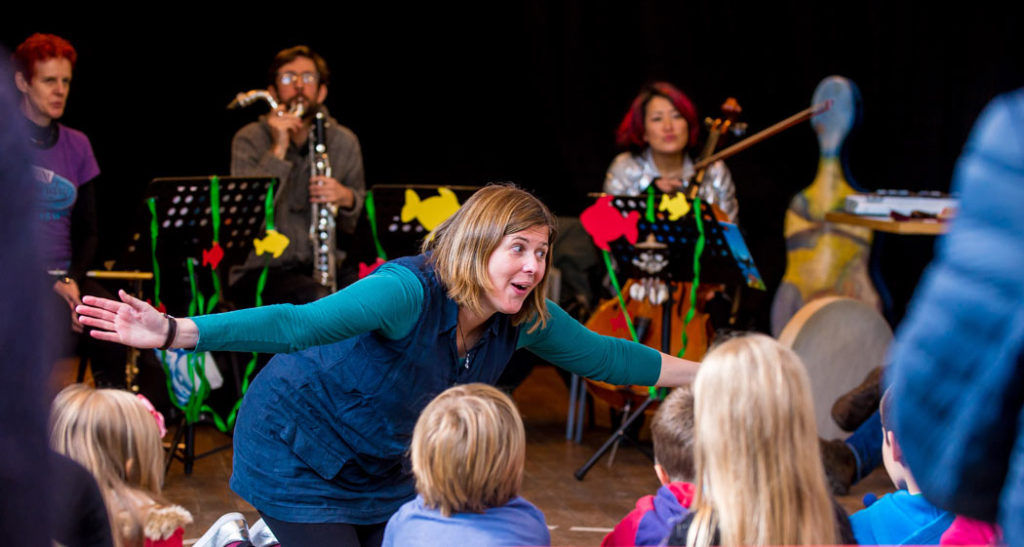Waste Not, Want Not. Discards that could feed those in poverty

At least 7.3m tons of fish (usually dead or dying) are thought to be discarded each year from marine fisheries around the world. But these estimates come mostly from observations of large-scale industrial fisheries. Limited attention has been paid to small-scale fisheries, which are assumed to have low discard rates – some estimate as little as 3.7% total catch, compared to more than 60% for some large-scale shrimp trawlers. Small-scale or artisanal fisheries – for which there is no universal definition – are generally considered more sustainable than their large-scale industrial counterparts, but there is increasing evidence that shows this is not always the case. They employ more than 99% of the world’s 51m fishers and likely account for more than half of the total global fisheries catches. A Sri Lankan fisherman. One of the biggest problems for both large and small-scale fisheries around the globe is bycatch – fish and other marine organisms caught when the fishers are targeting something else. Powerful images of turtles and dolphins caught in fishing gear have caught the sympathy of the general public, but unintentional landings of fish aren’t as evocative. The truth is, however, that fish bycatch is a big issue. Progress is being made in Europe within large-scale fisheries thanks to campaigns such as the Fish Fight. But small-scale fisheries – though there is increasing recognition outside that they are “too big to ignore” – are only just beginning to recognise the fish bycatch and discard problem. Catch and bycatch. Our newly published research has found that artisanal fisheries in Sri Lanka are throwing away more marine species than they keep. For every fishing trip in one of Sri Lanka’s largest lagoons, Puttalam Lagoon, fishermen could be throwing away more than 50 fish. What’s more, of the 62 species recorded in the survey, more than 80% were routinely discarded. The reasons for this practice are unclear but sometimes it is because the individual fish are too small – or they are species without a high market value. We found that fishers targeting shrimp in particular caught more non-target species and had higher discards than those targeting fish. This is particularly worrying at a time when Sri Lankan shrimp exports are increasing, after the EU granted the country improved access to its market. Fishers in Puttalam Lagoon discard non-target catch onshore. Potentially 90% of the world’s fish stocks are threatened by over-fishing – when more fish are caught than the population can replace. And the “tell-tale” signs of over-fishing are now being observed in Sri Lanka and across other research sites in the Indo-Pacific region. Fishers in these locations have told us and other researchers that they are catching much less fish than they were five years ago. But this is not just an ecological issue, it is a social one too. In this era of increasing food insecurity, our findings highlight a serious concern for Sri Lanka. This unwanted seafood could be used to provide protein for the poorest in society. Instead, we found that fish with high nutritional value is being eaten by feral dogs and birds. Unwanted fish end up as quick and easy meals for animals. Billions of people worldwide rely daily on fish for protein, while 50m people also rely on catching fish for work. But, if the levels of bycatch and discard continue, the livelihoods and food security of the people that depend on these fisheries will be under threat. If the problem is not managed, there won’t be any fish left in the waters. There is one ray of hope for Sri Lanka, however. There are some small-scale fishery cooperatives which maximise long-term community benefits by dealing with the threats of fisheries mismanagement, livelihood insecurity and poverty. Communities with successful and inclusive cooperatives are better off than those without. Cooperatives have the potential to empower small-scale fishers against environmental and socioeconomic shocks, but the problem in Puttalam Lagoon is that these cooperatives are not operating across all levels of society. Fishing cooperatives do exist, but there could be more. If the bycatch and discards issue is going to be solved over the long-term, we need to look at combining sustainable management practices with community schemes to reduce unnecessary seafood waste all over the world. Together the millions of small-scale fishers all over the world have an immense amount of power, they just need to realise it. This article was originally published on The Conversation. Read the original article.
Sewage and livestock waste is killing Britain’s seagrass meadows

Britain’s seagrass is a refuge for numerous species of fish, stabilises sandy beaches, and helps to lock away the carbon which humans produce. The meadows that surround the country’s coast have been called the “canaries of the sea”, due to their sensitivity to a changing environment. And like a canary in a coal mine, their health can be used as an indicator of the condition of coastal areas. We know that the seagrass meadows surrounding the UK are in a perilous state of decline, and our recently published research has now uncovered one of the biggest causes. Our study suggests that a major driver of seagrass decline is nutrient pollution from sewage and livestock waste. Though a new finding, it sadly comes as no surprise, given that about 40% of rivers in England and Wales are polluted with sewage. This nutrient pollution puts the long term viability of seagrass meadows in doubt. Over-enrichment results in the suffocation of seagrass. The nutrients cause microscopic algae – called epiphytes – to smother the seagrass leaves, decreasing their ability to capture light, ultimately killing them, and destroying the habitat for fish and other marine animals. Â The seagrass, Zostera marina, covered in epiphytes. In addition to this environmental impact, we found that several areas, including the Thames waterway seagrass, and a meadow in Studland Bay, Dorset – which are popular with swimmers and boaters – were considerably enriched in nutrients from sewage, livestock effluent and/or human waste. Despite this, neither location, nor any other we identified with the same problem, were classed as unsuitable for swimmers. Outdated treatment Clearly, we have a massive problem at hand – but water companies, farmers and the government have not done and are still not doing enough to prevent it. Though efforts have been made to develop a British marine protected area network, and EU legislation has improved water quality in the last few decades, we have found these initiatives to be insufficient. Ten of the 11 sites we studied were in areas with designated EU protection, but most of these seagrass meadows were still polluted with nutrients derived from urban sewage and livestock waste. So how has this happened? Analysis of the seagrass tissues points to constant sewage exposure. Old and outdated water treatment facilities are one of the likely culprits, resulting in discharges of untreated sewage during times of heavy rainfall. These are legal, but evidently the capacity of these facilities is insufficient to handle the country’s needs, and waterways are suffering because of it. There is also the problem of livestock waste. Farming is now one of the UK’s leading causes of water pollution, and inefficiencies in storage and disposal of slurry mean that it ends up in rivers and coastal waters. Local and national Evidently, in addition to national and international initiatives, we need to start quickly identifying and understanding all local threats to seagrass. Especially if we are going to harmonise conservation goals with sustainable economic development. Only by finding out specifically where the nutrients affecting seagrass areas have come from can we really start to think about a targeted solution for each meadow. Unfortunately, to date, the conservation of specific seagrass meadows is rarely based on the explicit consideration of local threats and drivers. Instead, projects focus on conserving seagrass as part of a broader plan, incorporating other specific habitats or species. While this may be effective at dealing with problems such as fisheries impacts, and is certainly a step forward for the marine environment, it doesn’t deal with the persistent and chronic problem of pollution – which can go largely unnoticed. Poor water quality isn’t just a problem for seagrass in the British Isles, it’s a global concern. But if we want to solve it, we must look beyond “protecting” seagrasses with legislation, and challenge the way we think about marine protection overall. Serious infrastructure changes and better management of river catchments – for example, restoration of riverbanks – are vital if we are going to develop long term waste water management plans that span both land and sea. You can read the study, Tracking Nitrogen Source Using δ15N Reveals Human and Agricultural Drivers of Seagrass Degradation across the British Isles, here. This article was originally published on The Conversation. Read the original article.
A Symphony For Scottish Seagrass

Hello Team Seagrass! I am Rufus, a volunteer with Project Seagrass and a marine biology graduate from the University of St Andrews. Since graduating in June 2017, I have begun working for the Scottish Chamber Orchestra’s Connect team and the University of St Andrews’ Music Centre. In this split position, I get to enjoy the benefits of working with extraordinary artists and musicians across the country to inspire babies, toddlers, children, students and adults to get more involved with the music in the community around them. There are so many educational opportunities provided by both the Scottish Chamber Orchestra and the University of St Andrews. Through its Connect programme, the Scottish Chamber Orchestra interacts with over 10,000 people each year through a vast array of activities. Both the staff and the musicians of the orchestra are extremely driven to reach new audiences all the time, not only to encourage interaction with music in the future but also, in some cases, to improve quality of life. There are so many educational opportunities that can be provided through music. Photo Credit – Fraser Band The Music Centre at the University St Andrews has also led some fantastic workshops throughout local schools in Fife with some of the excellent artists that come to the town to perform. One of the University’s initiatives that I have been involved in is Music Planet. This is a platform that promotes the combination of the arts with global environmental issues to enhance the power of the message that is conveyed, and also to engage new audiences. Music is a fundamental part of human culture, irrespective of where you come from or what your background is. There aren’t many people who don’t enjoy listening to some form of music, either when they are travelling, working, cooking, cleaning or as any other part of their day. I believe that because of this, music has the most potential in interdisciplinary education. Using music, and getting an audience to be involved with music and music making, will help to engage them with any subject. Music making can help children and adults to engage with any subject. Photo Credit – Fraser Band One of the easiest combinations that can be made is music and nature because, in nature, music is all around anyway. The natural soundscape has endless capabilities that can be tapped into to expand the possibilities of what you are teaching. In March, I will be co-leading a SCO workshop, with SCO violin Aisling O’Dea, for primary schools in Fife in conjunction with Project Seagrass and Music Planet from the University of St Andrews. A team of musicians from the orchestra and volunteers from Project Seagrass will provide a day workshop for pupils at primary schools centered around the children’s story, “The Snail and the Whale” by Julia Donaldson. This excellent book tells the story of a snail that seeks to see the world and journeys across the oceans on the tail of a humpback whale. In the end, it is an endearing story of community and self-worth. In March, I will be co-leading a SCO workshop, with SCO violin Aisling O’Dea, for primary schools in Fife in conjunction with Project Seagrass and Music Planet from the University of St Andrews. Photo Credit – Fraser Band The day will be centered around this story’s characters and the music that was written to accompany the story. Various activities throughout the day will involve the children in the scientific background behind important environmental issues whilst providing them the opportunity to get involved with the music making themselves. At this important tipping point, the future of the planet as we know it relies on the engagement of the public all over the world. Music can help to broaden the prospects of domestic and international education campaigns to make that change. Rufus If you would like to follow more of my activity, I have recently started a personal challenge and campaign to reduce my impact on the environment – #Green18. In my attempt to complete this challenge, I will write regular blog posts to document my success and any obstacles I have encountered along the way. Follow online @ www.green18.org Facebook @ www.facebook.com/GreenEighteen/ Instagram @ www.instagram.com/_green_18/ Twitter @ www.twitter.com/_Green_18 You can find out more about the Scottish Chamber Orchestra or music in St Andrews below: Follow online: st-andrews.ac.uk/music/ sco.org.uk Like on Facebook: www.facebook.com/scottishchamberorchestra/ www.facebook.com/UniversityofStAndrewsMusicCentre/ Follow on Twitter: @SCOmusic @StAndrewsMusic

